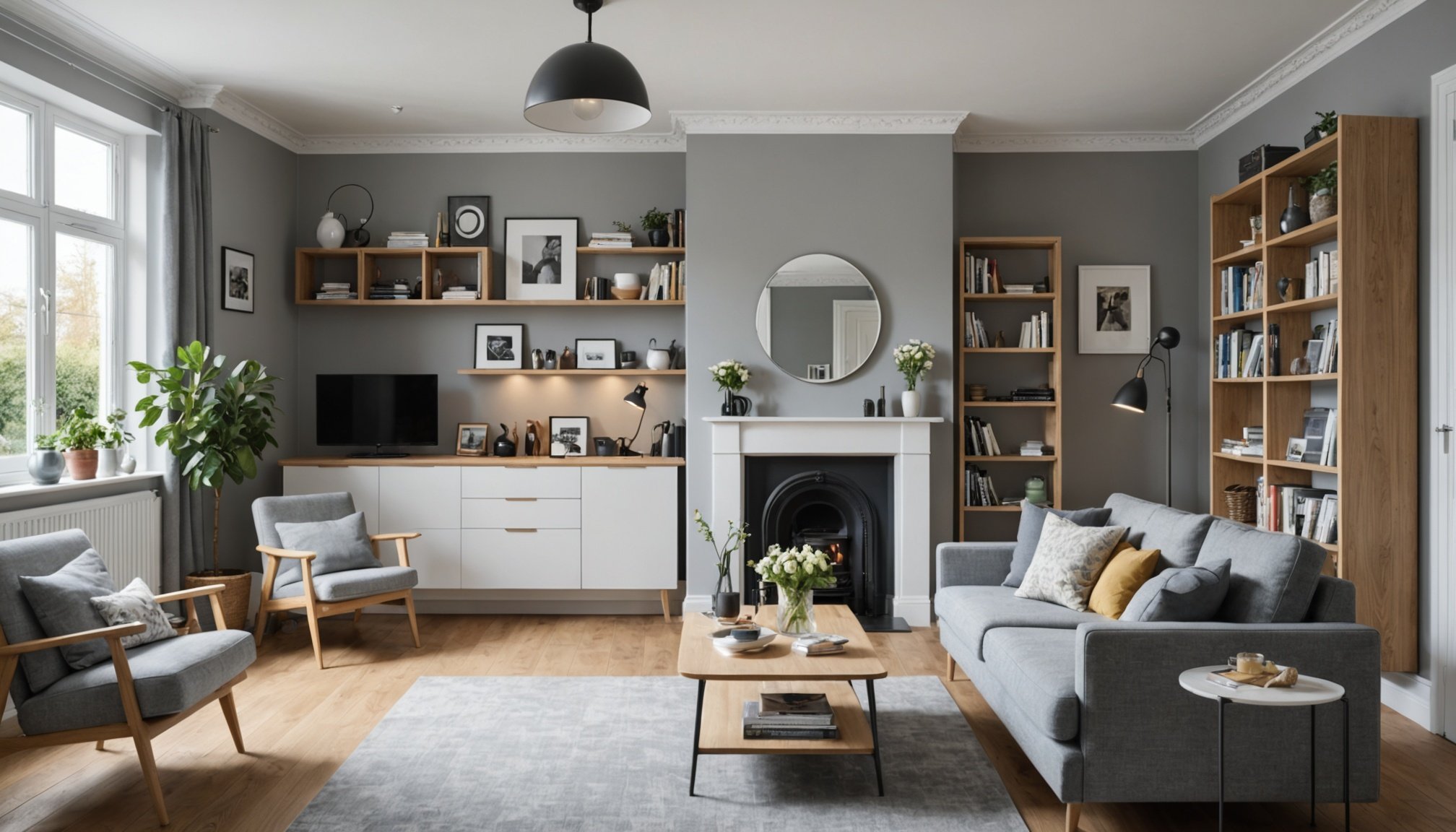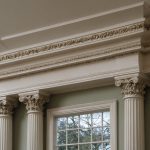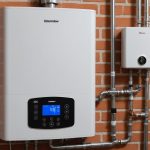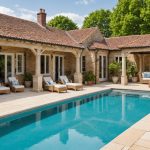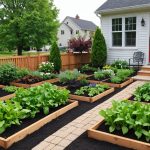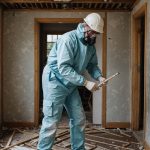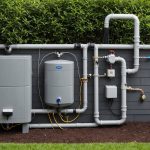Creating an elderly-friendly haven in your UK flat doesn't require extensive renovations. Simple enhancements can vastly improve comfort and accessibility. Prioritising safety, mobility, and ease of use makes a significant difference for elderly residents. From adjusting lighting to reorganising furniture, these practical changes foster independence and well-being. Embrace the opportunity to transform your space into a welcoming environment for seniors, ensuring their needs are met without overwhelming costs or disruptions. Discover the straightforward steps you can take to make this a reality.
Practical Modifications for Elderly Accessibility
Creating an elderly-friendly environment is essential for promoting safety and independence. Simple home modifications can significantly enhance accessibility for seniors. Installing grab bars and handrails in key areas like bathrooms and staircases is a practical solution. These modifications provide support and reduce the risk of falls, a common concern for the elderly.
En parallèle : How do you design a pet-friendly living space in a UK apartment with limited square footage?
Implementing these changes doesn't have to be costly. Here are some cost-effective ways to improve accessibility:
- Grab Bars: Available in various styles and prices, grab bars can be installed in bathrooms, near toilets, and in showers. They offer stability and support.
- Handrails: Adding handrails along staircases and hallways can prevent accidents. Choose durable materials to ensure longevity.
- Lighting: Improve lighting in dim areas to help with visibility, reducing the likelihood of trips and falls.
These practical solutions not only enhance safety but also empower seniors to maintain their independence at home. By focusing on these modifications, caregivers can create a more comfortable and secure living environment for their elderly loved ones.
Sujet a lire : Smart Storage Solutions: Maximizing Space in Your Compact UK Flat Kitchen
Enhancing Lighting and Visibility
Enhancing lighting improvements is crucial for creating an elder-friendly environment. Better lighting can drastically improve visibility enhancements, making daily activities safer and more manageable for seniors.
One effective strategy is to maximise natural lighting in flats. This can be achieved by using sheer curtains or blinds that allow sunlight to filter through while maintaining privacy. Natural light not only boosts mood but also improves visibility during the day.
For evening and nighttime, installing motion sensor lights is highly recommended. These lights automatically turn on when movement is detected, providing immediate illumination without the need for switches. This feature is especially beneficial in hallways and bathrooms, reducing the risk of accidents during late-night trips.
Additionally, reducing glare is essential for comfort. Choose light fixtures and bulbs that emit a warm light rather than harsh, bright lights. Warm lighting is gentler on the eyes, helping to create a soothing atmosphere. Consider using lampshades or diffusers to soften the light and minimise glare, further enhancing the comfort and safety of the living space. These thoughtful adjustments in lighting can significantly contribute to a safer and more welcoming environment for the elderly.
Reducing Trip Hazards
Creating a safe living environment for seniors involves effective trip hazard reduction. Identifying and addressing these hazards is vital for fall prevention in UK flats. Common trip hazards include loose cables, uneven flooring, and cluttered walkways. By recognising these risks, you can make necessary safety modifications to protect elderly residents.
Reorganising furniture is a simple yet impactful strategy. Ensure pathways are clear and wide enough for easy navigation. Avoid placing furniture in high-traffic areas, and consider rearranging pieces to create a more open layout. Decluttering spaces can further reduce the risk of trips. Remove unnecessary items from floors and surfaces, and store belongings in accessible places.
For flooring, opt for non-slip solutions. Installing non-slip flooring in areas prone to moisture, such as bathrooms and kitchens, can significantly decrease the likelihood of falls. If replacing flooring isn't feasible, use non-slip mats or area rugs with rubber backings. These provide additional traction and stability, especially on slippery surfaces.
By implementing these practical measures, you can enhance safety and comfort for seniors, allowing them to move around their homes with greater confidence and ease.
Furniture Arrangement for Mobility
Optimising furniture arrangement is essential for enhancing mobility in a senior's living space. By following specific guidelines, you can create an environment that supports easy movement and accessibility.
Begin by ensuring clear pathways throughout the home. Arrange furniture to allow unobstructed routes, especially in high-traffic areas. This reduces the risk of accidents and facilitates smoother navigation. Place essential items within easy reach to minimise the need for unnecessary movement.
Incorporate multi-functional furniture to maximise space, particularly in smaller flats. Consider a sofa bed or a storage ottoman, which can serve dual purposes and reduce clutter. This approach not only optimises space but also provides practical solutions for everyday living.
Accessible seating is another crucial aspect. Choose chairs and sofas that are easy to get in and out of, with firm cushions and supportive armrests. Position seating to face key areas, such as the television or windows, to create a comfortable and inviting atmosphere.
By prioritising these mobility solutions, you can transform a living space into a safe and functional environment tailored to the needs of elderly residents.
Bathroom Safety Enhancements
Creating an elder-friendly bathroom involves key safety upgrades to ensure both comfort and security. Essential bathroom modifications include installing grab bars near toilets and showers. These provide stability and support, significantly reducing the risk of falls.
Incorporate non-slip mats in wet areas to prevent slipping. These mats are crucial for maintaining a safe environment, especially for those with limited mobility. Additionally, consider raised toilet seats. They make it easier for seniors to sit and stand, reducing strain on joints. Shower chairs are another practical addition, offering a secure place to sit while bathing, thus enhancing both safety and independence.
To facilitate these modifications, explore local resources for professional services. Many communities offer assistance programs or recommendations for reputable contractors specialising in elder-friendly renovations. These experts can provide tailored solutions to meet specific needs, ensuring that bathroom safety is optimised.
By focusing on these enhancements, you can transform a standard bathroom into a safe haven for elderly residents, empowering them to maintain their independence with confidence.
Kitchen Adaptations for Ease of Use
Creating an elder-friendly kitchen involves thoughtful kitchen modifications that cater to the needs of seniors. Ensuring that kitchen items are organised within easy reach is paramount. Place frequently used items on lower shelves or countertops to minimise the need for bending or stretching. This organisation not only enhances safety but also promotes independence in daily tasks.
Incorporating adaptive cooking tools and appliances can significantly improve cooking safety. Consider using lightweight utensils with ergonomic handles, which are easier to grip for those with arthritis or reduced hand strength. Appliances with simple controls and automatic shut-off features can prevent accidents, providing peace of mind.
Clear labelling and colour coding are crucial for maintaining an accessible kitchen environment. Use large, bold labels on containers and shelves to clearly identify contents. Colour coding can further assist in distinguishing between different food groups or kitchen zones, making navigation intuitive and reducing the risk of confusion.
By implementing these strategies, you can transform the kitchen into a safe and efficient space, allowing elderly residents to enjoy cooking and meal preparation with ease and confidence.
Resources and Regulations for Elderly Care
Navigating elderly care resources can be crucial for ensuring a safe and comfortable living environment for seniors. In the UK, various support services are available to assist with home modifications. Local councils often provide information on services like home assessments and installation of safety features. These resources are designed to help families make informed decisions about necessary adaptations.
Understanding local regulations is essential when planning home modifications. Regulations may dictate the types of changes allowed, especially in listed buildings or rented properties. It's important to consult with local authorities to ensure compliance with building codes and accessibility standards. This step helps avoid potential legal issues and ensures modifications meet safety requirements.
Accessing grants or financial assistance can significantly ease the financial burden of home improvements. The UK government and various charities offer grants specifically for elderly care modifications. These funds can be used for installing grab bars, ramps, or other essential features. To apply, contact local councils or charitable organisations for guidance on eligibility and application processes. By leveraging these resources, families can enhance their loved ones' living conditions without incurring prohibitive costs.

